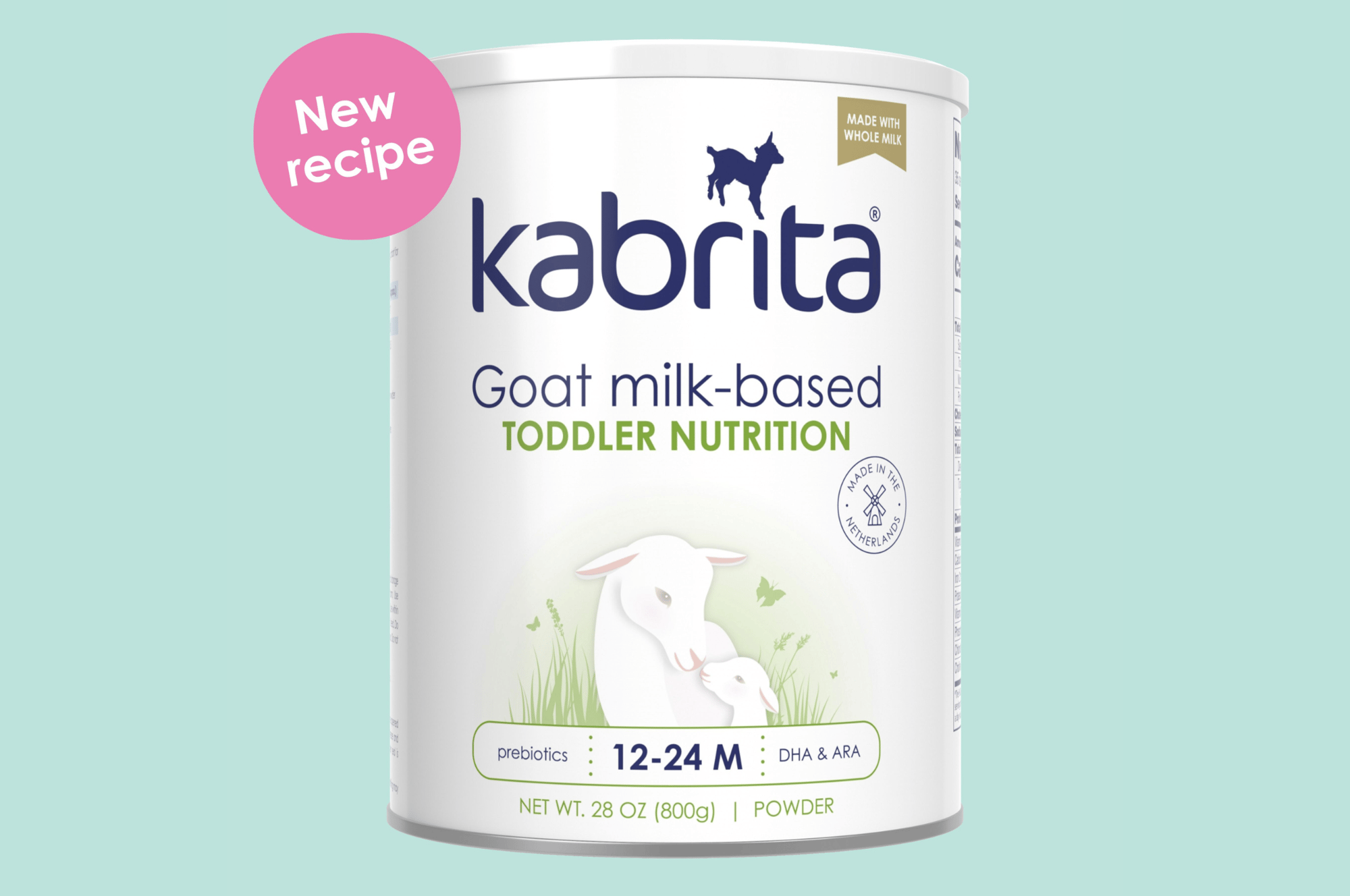
US Goat Milk-Based Toddler Nutrition
Proudly crafted in the Netherlands, Kabrita Goat Milk-Based Toddler Nutrition is a drink made with gentle, nutrient-rich whole goat milk and thoughtfully formulated to complement a varied diet and help meet the nutritional needs of toddlers aged 12–24 months. It includes key nutrients that U.S. toddlers are often not getting enough of, along with easy-to-digest proteins and healthy fats.

What's inside
Whole Goat Milk
Provides all three macronutrients—fats, carbohydrates, and protein—supporting healthy growth and development in toddlers.
Goat Milk Protein
Naturally easier to digest than cow milk protein.2–7
Calcium & Vitamin D
Excellent source to support bone health.66
Iron
Excellent source of iron to support immune and metabolic health.49,67
Vitamin E
Excellent source of Vitamin E to support immune health and brain development.48,68
Potassium
Good source of potassium to support muscle and nerve health.43
Choline
Good source of choline to support muscle control and nervous system health.41,69
ARA & DHA
From plant-based sources.
Naturally Occurring Nucleotides
Supports GI and immune system function.19
We know you want to review the label
Disclaimer: This recipe and label are specific to the US formulation.
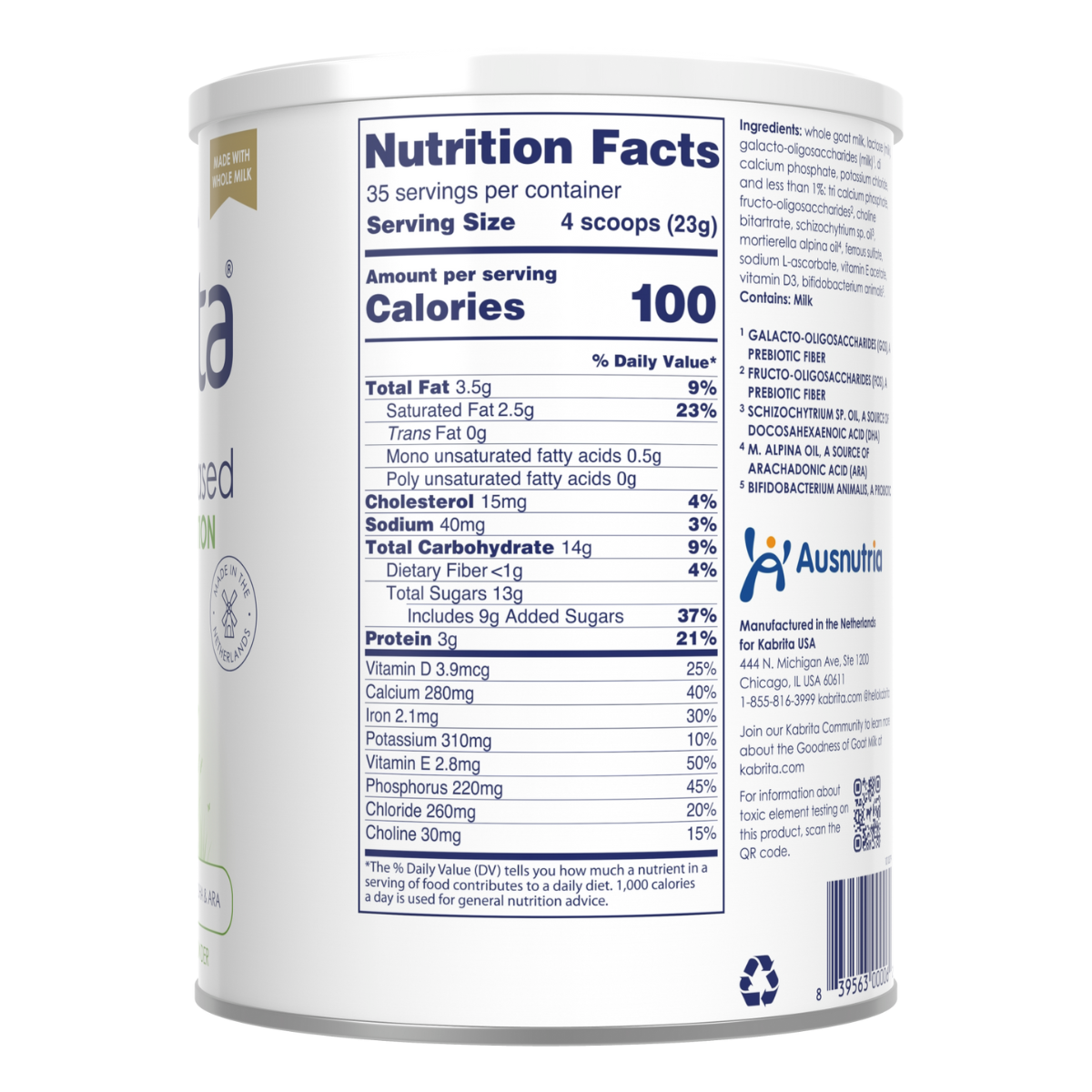
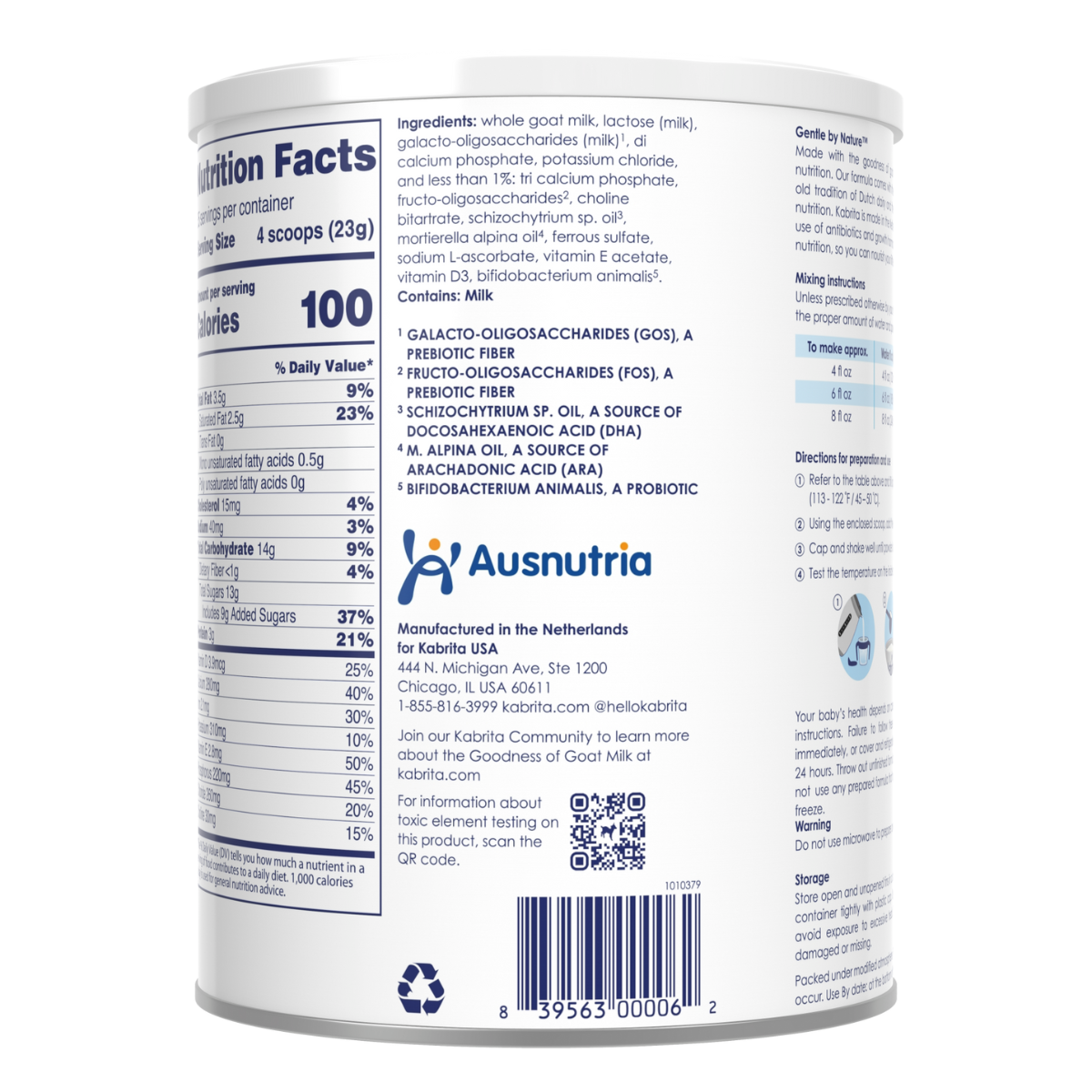
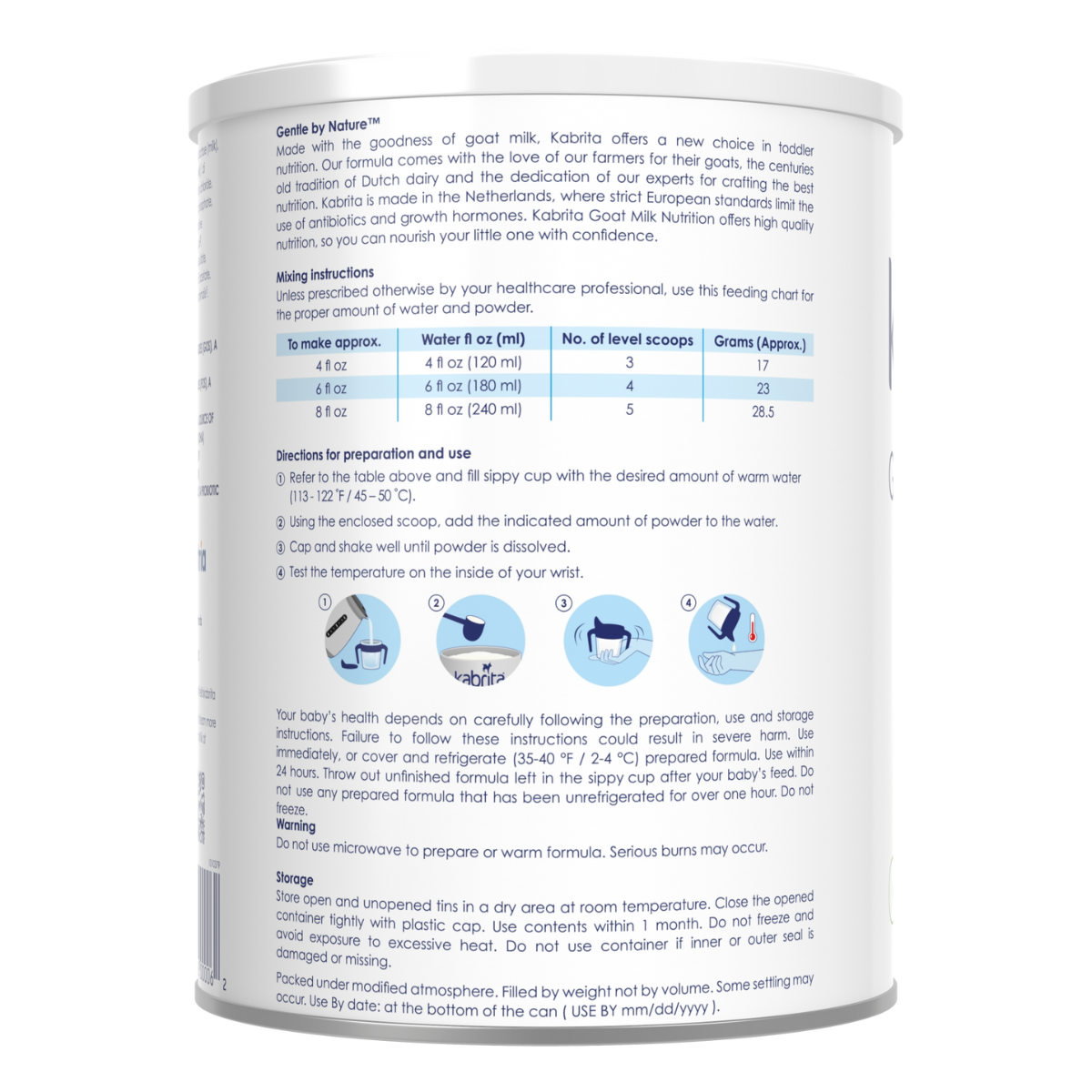
Ingredient deep dive
Click on each ingredient to learn what it is and why we’re proud to have it in our Toddler Nutrition drinkGalacto-oligosaccharides (GOS) are complex carbohydrates that are also naturally found in human milk.
GOS is the most studied prebiotic and has proven health benefits such as the ability to stimulate growth of beneficial bacteria, hamper the growth of pathogenic bacteria, and improve stool consistency.30
Potassium is required for normal cell function because of its role in maintaining intracellular fluid volume and transmembrane electrochemical gradients.
Potassium has a strong relationship with sodium, the main regulator of extracellular fluid volume, including plasma volume.43Together with DHA, ARA supports normal eye, brain, and neurological development as well as the repair and growth of muscle tissue.32–35
The balance between DHA and ARA is important, and Kabrita formula meets the scientific recommendation of more ARA than DHA.31,34,36,37
Vitamin C is also an important physiological antioxidant and has been shown to regenerate other antioxidants within the body, including alpha-tocopherol. It plays an important role in immune function and improves the absorption of nonheme iron.44
Vitamin D is a fat-soluble vitamin that promotes calcium absorption in the gut and is critical for normal bone mineralization, bone growth, and bone remodeling.
Vitamin D has other roles in the body, including reduction of inflammation as well as modulation of such processes as cell growth, neuromuscular and immune function, and glucose metabolism.
Many genes encoding proteins that regulate cell proliferation, differentiation, and apoptosis are modulated in part by vitamin D.64
Bifidobacterium animalis ssp. lactis (BB-12), is the world’s most documented Bifidobacterium probiotic.
BB-12 has been shown to support a healthy gastrointestinal microbiota, improve bowel function, to have a protective effect against diarrhea, and to reduce side effects of antibiotic treatment, such as antibiotic-associated diarrhea.66
In terms of immune function, clinical studies have shown that BB-12 increases the body’s resistance to common respiratory infections as well as reduces the incidence of acute respiratory tract infections.66
Toddler formula product resources

US Toddler Clinical Overview
The Kabrita Goat Milk-Based Toddler Nutrition drink clinical overview is a tool designed to support ...
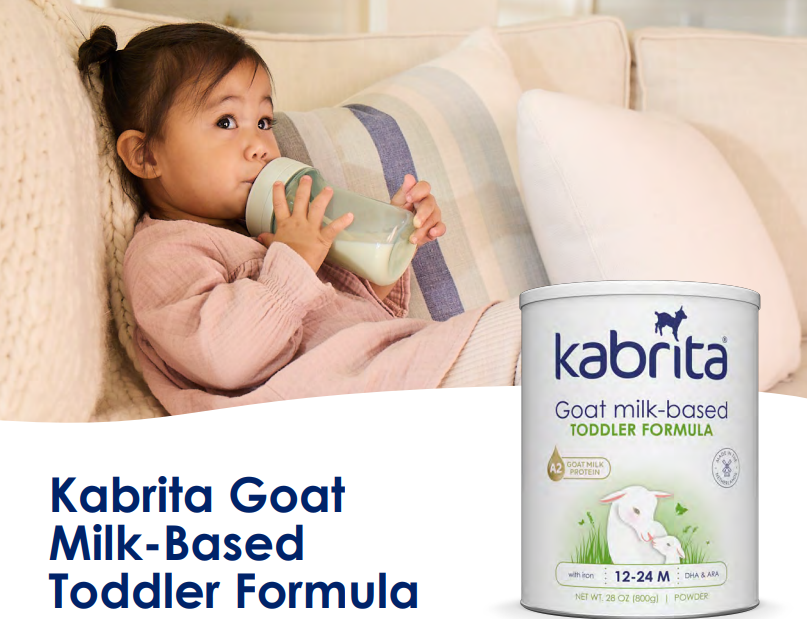
Medical Product Guide
Parents in the US have trusted Kabrita toddler formula since 2014. Learn what makes our formula opti...







